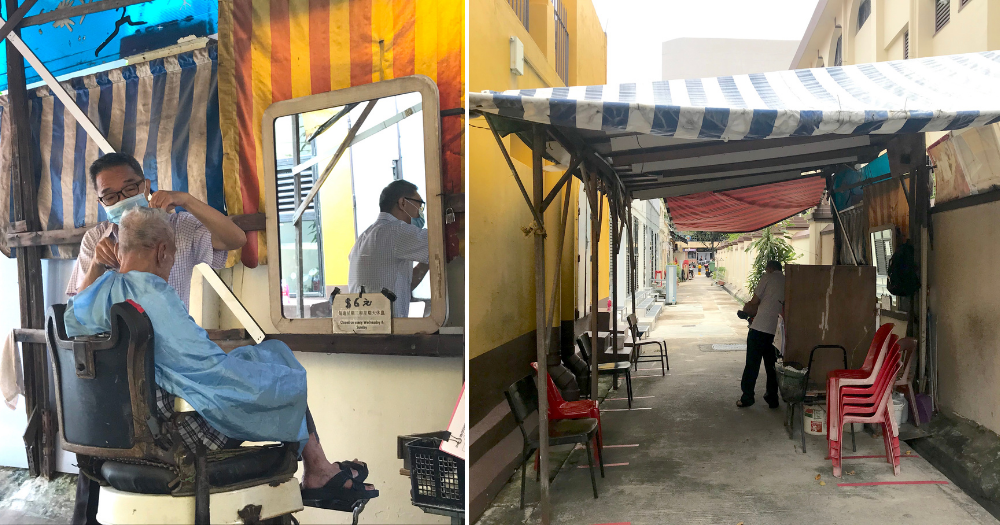Nestled in a narrow alleyway between the Alsagoff Arab School and a bright yellow shophouse is what appears to be a small shanty structure.
It is at this open-air spot where Tan Boon Kee, better known as Uncle Tan to friends and customers, plies his trade of giving haircuts five days a week.
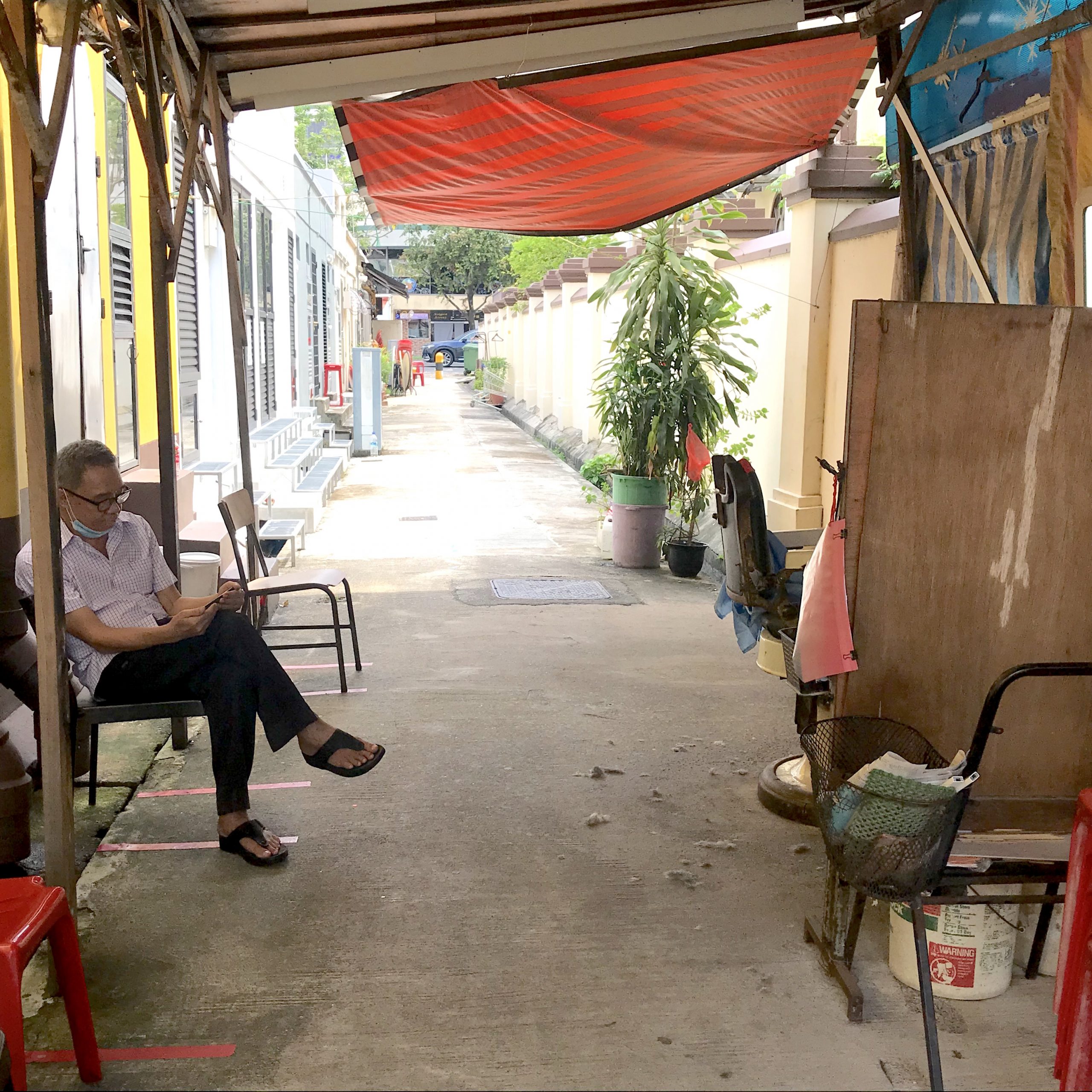 Photo by Ashley Tan
Photo by Ashley Tan
Going down to take a look at the humble space, I stumbled across Tan (the location of his shop on Google Maps was not very precise) sitting casually in one of the red plastic chairs lined up in front of the wall, watching a video on his mobile phone.
He peered owlishly and a tad warily at me.
I wasn't exactly the slightly older clientele he had gotten used to over the years.
After some hesitation, Tan eventually acquiesced to my request for a few questions, and motioned for me to take a seat beside him — thereafter which he proceeded to share more about his trade.
Never thought of moving elsewhere
For someone who has had her haircuts at various air-conditioned salons her entire life, the concept of a street barber is quite a foreign one.
But Tan might have been operating his street barber shop for the same amount of time as I have been alive.
Tan, who is 75 gives me a rather vague "20 plus years" when asked how long he has been at Aliwal Street.
The shop space is sheltered by a striped tarpaulin affixed to a metal skeleton, below which a single barber chair faces a mirror.
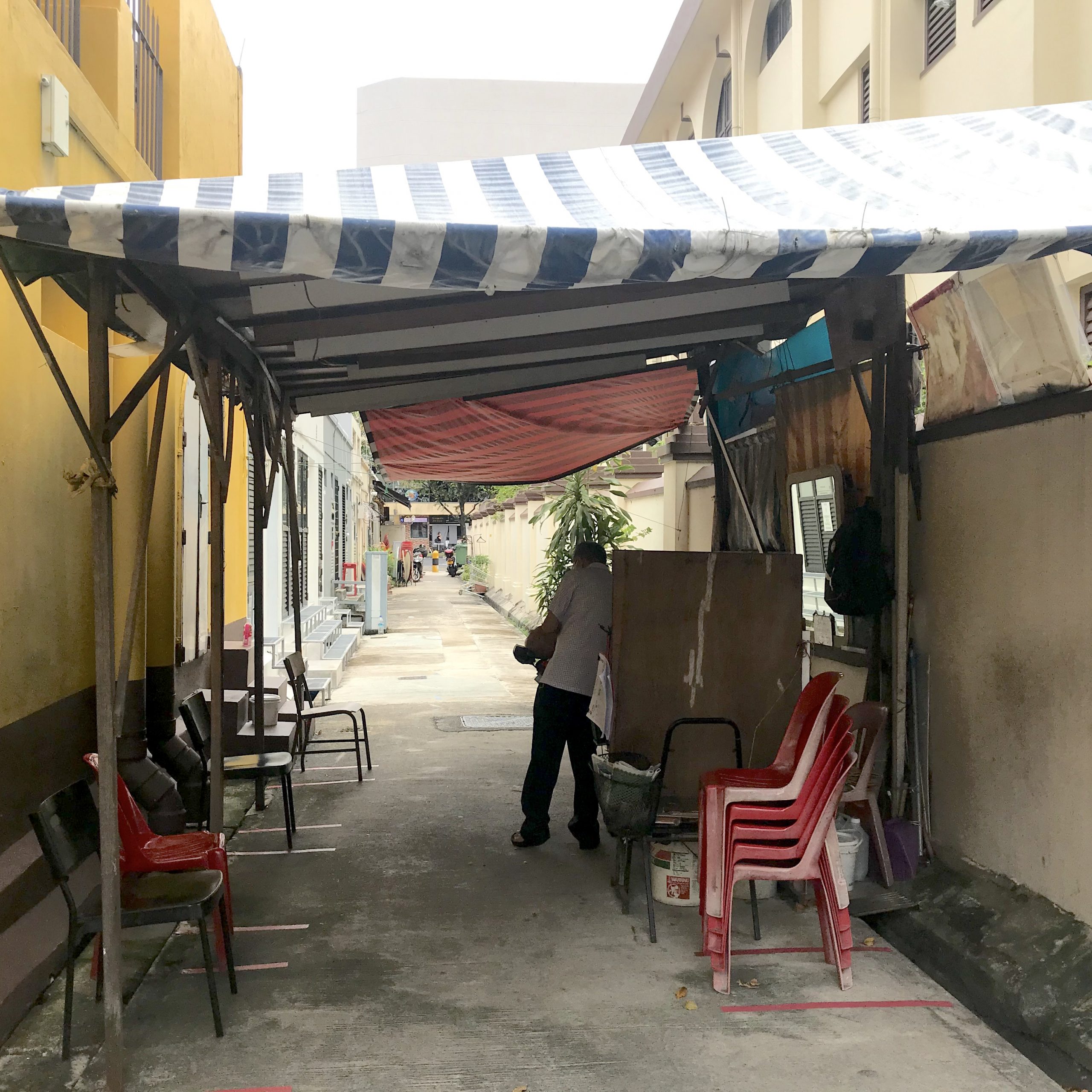 Photo by Ashley Tan
Photo by Ashley Tan
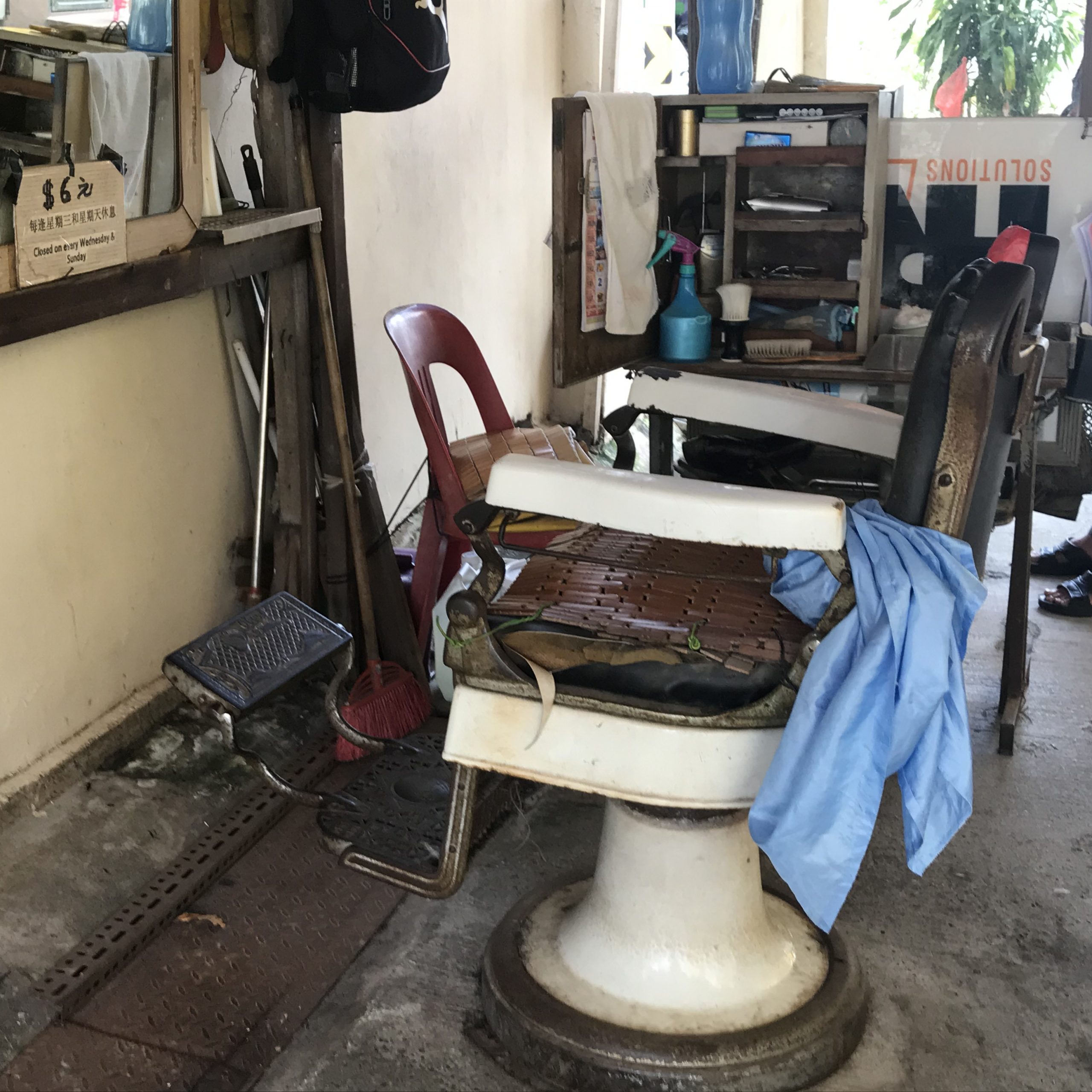 Photo by Ashley Tan
Photo by Ashley Tan
The shelter does not exactly afford Tan and his customers the best protection from inclement weather.
Despite these conditions, Tan has accreted a loyal following of regular customers, most of whom are seniors. He said that although younger people have heard about or been intrigued by his shop, few go to him for haircuts due to the lack of air-conditioning.
When asked whether he has considered moving to a more comfortable shop space, Tan answers with a resounding "No".
"I've never thought of moving anywhere else. It's not a question of liking or not liking [this place]. I'm used to it already," he says in Mandarin.
Fuss-free and economical
Tan opens his shop from 8am to 6pm every day save for two rest days on Wednesdays and Sundays.
Tan currently offers haircuts at a very economical S$6.
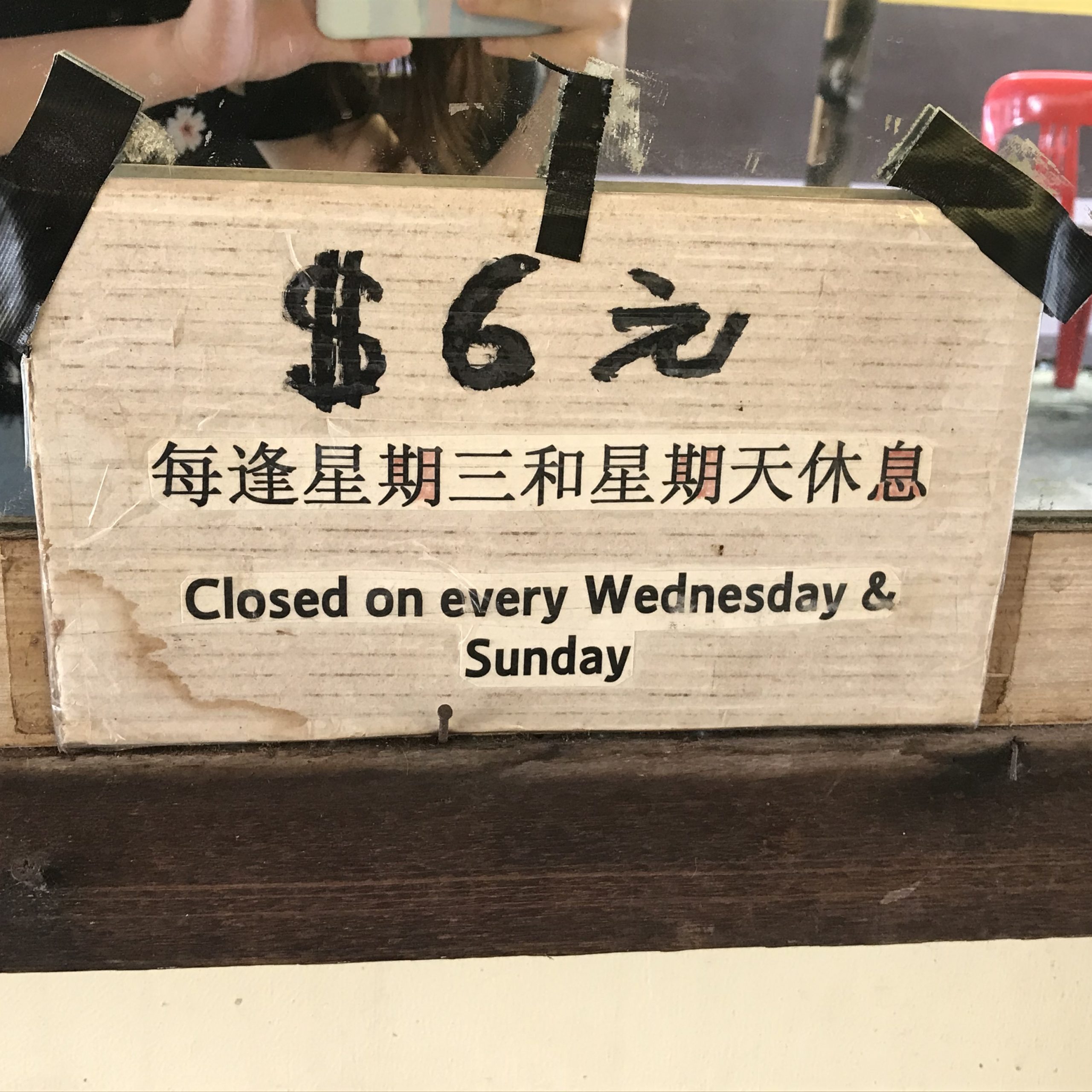 Photo by Ashley Tan
Photo by Ashley Tan
The S$6 package includes shaves and trimming eyebrows and nose hair.
A haircut from Tan takes around 15 to 20 minutes per customer. It's fuss-free and practical, a far cry from the extensive range of services offered by modern barbers and hairdressers.
Terms like "balayage", "undercut" and "perm" don't mean anything to Tan — after all, his customers are drawn back due to his functional cuts and cheap prices.
Old-school set-up
Our conversation is interrupted when we spot an elderly man ambling down the alley towards us — Tan's first customer of the day.
With nary a verbal greeting, simply a wave of hands between the two, Tan whips a Good Morning Towel and sheet over the seated man, and swiftly starts work.
The soft snip snip snip sounds of Tan's scissors are accompanied by the background tinny of Mandarin songs from a battery-operated radio.
Although most hairdressers or barbers these days do not hesitate to make conversation with their customers, both Tan and the elderly man are content to sit in stoic silence.
Both men enjoying a brief respite from the unrelenting march of modernity and time.
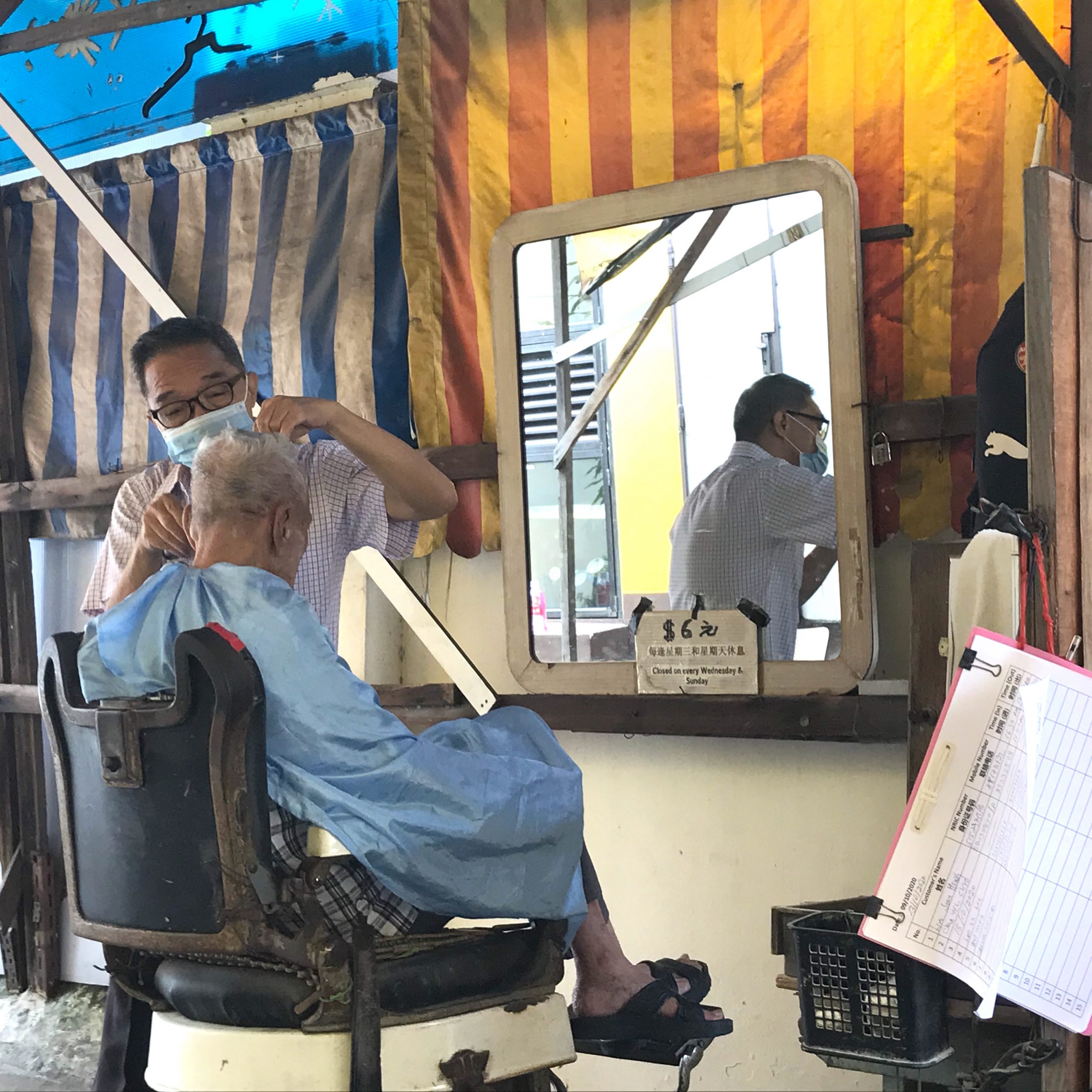 Photo by Ashley Tan
Photo by Ashley Tan
Tools and change
His simple workstation, constructed out of wooden boards and plywood, harkens back to older times.
There aren't any complex tools in his workstation, with only a classic straight razor and manual clippers at Tan's disposal. There are no electric shavers, after all, there is no electrical outlet for Tan to plug in his tools.
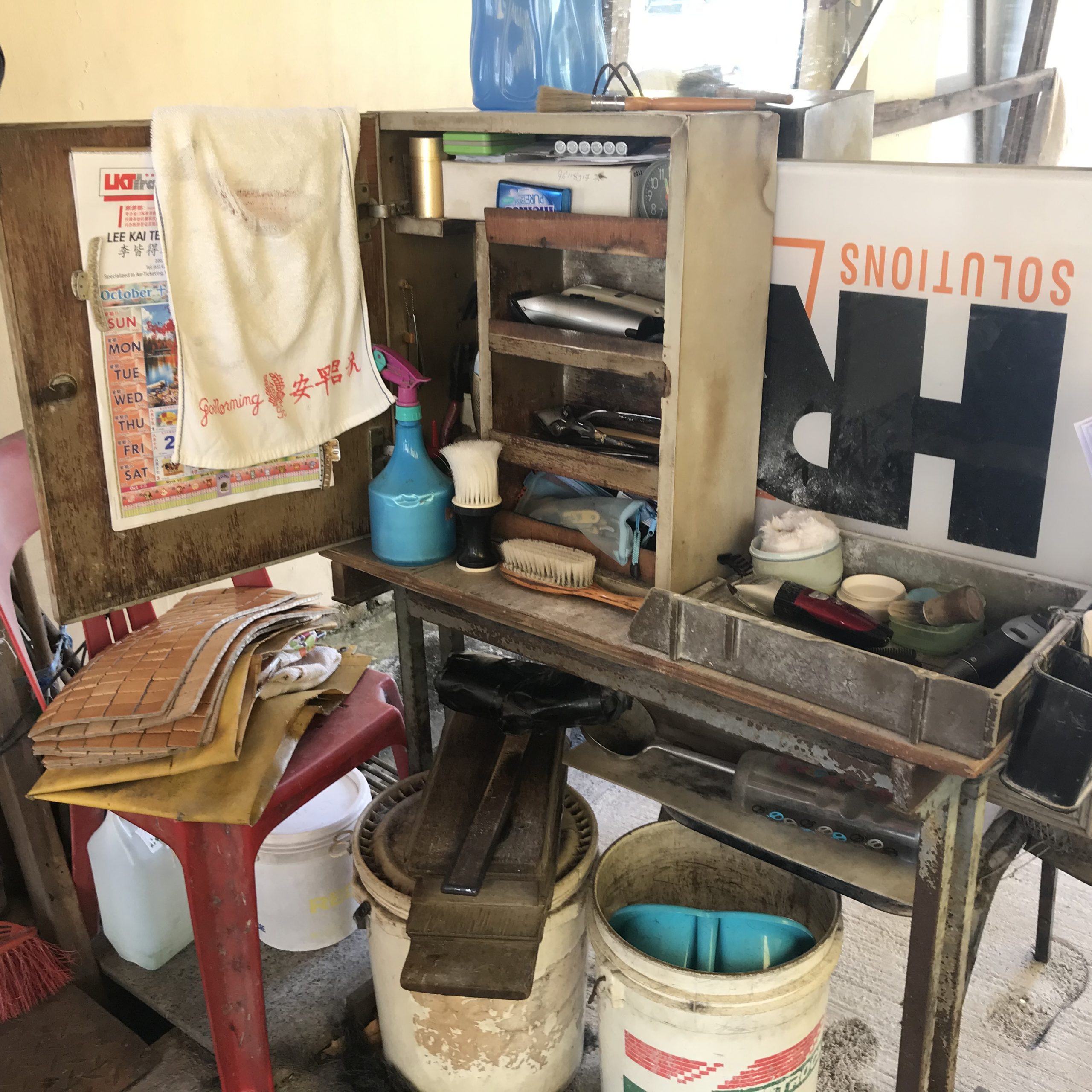 Photo by Ashley Tan
Photo by Ashley Tan
A basket containing the day's newspapers is also attached to the workstation for customers to conveniently check the 4D numbers or catch up on news before or after their haircut.
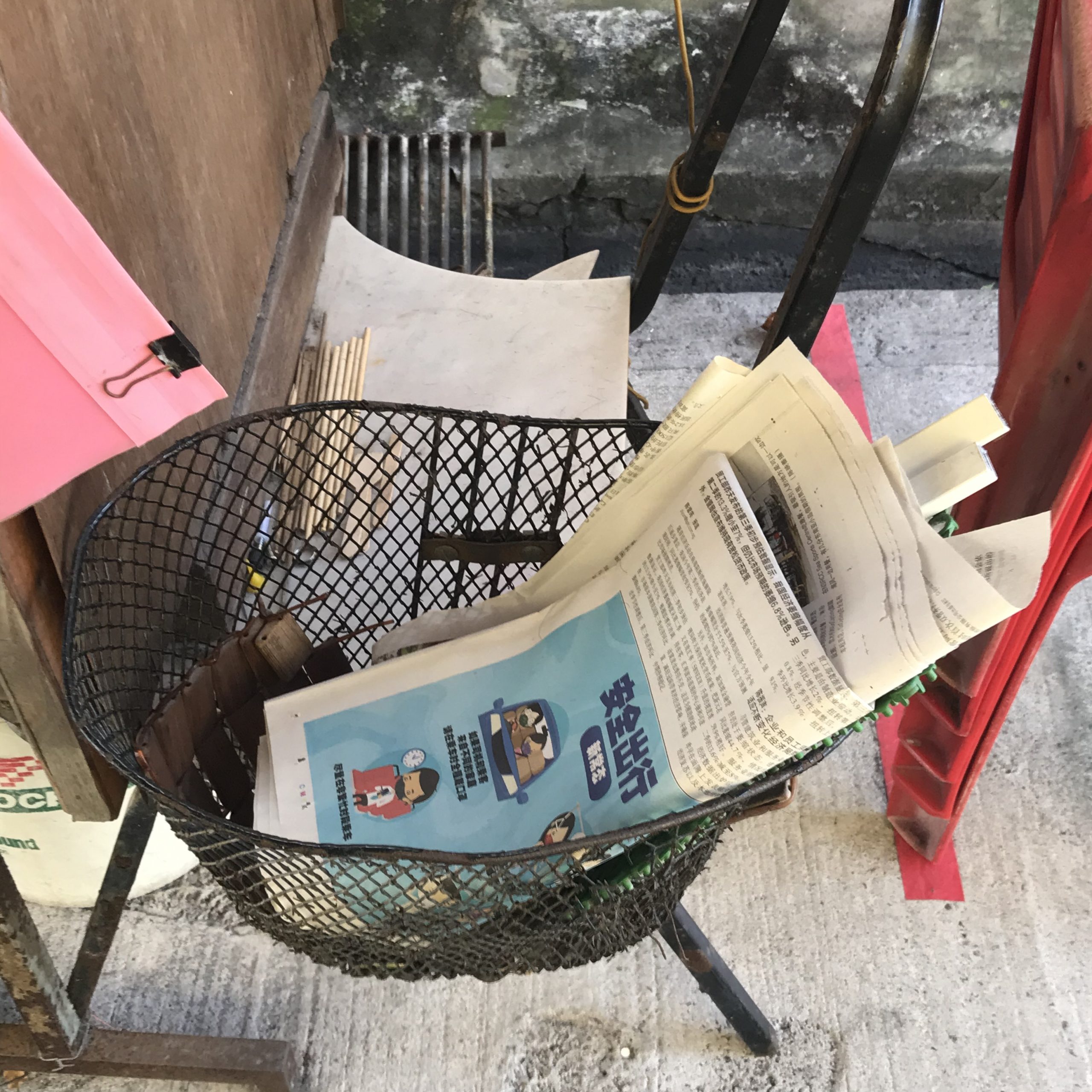 Photo by Ashley Tan
Photo by Ashley Tan
Barber Street in 1950s
Street barbers mostly occupied the back alleys and streets of Singapore in the 1950s.
However, they have been documented as far back as the 1890s.
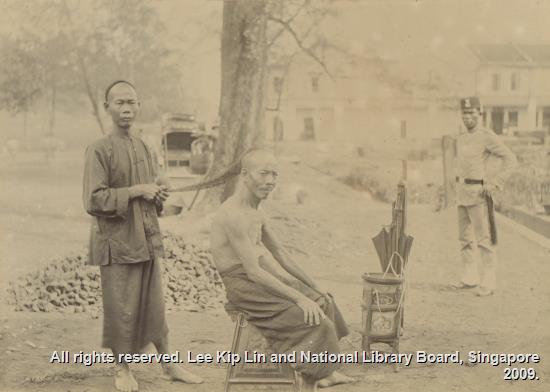 Photo by Lee Kip Lin via PictureSG
Photo by Lee Kip Lin via PictureSG
Back in the 50s, the bustling street was colloquially named "Barber Street", as numerous street barbers would set up shop along there to vie for customers.
Tan's set up doesn't seem to have changed much.
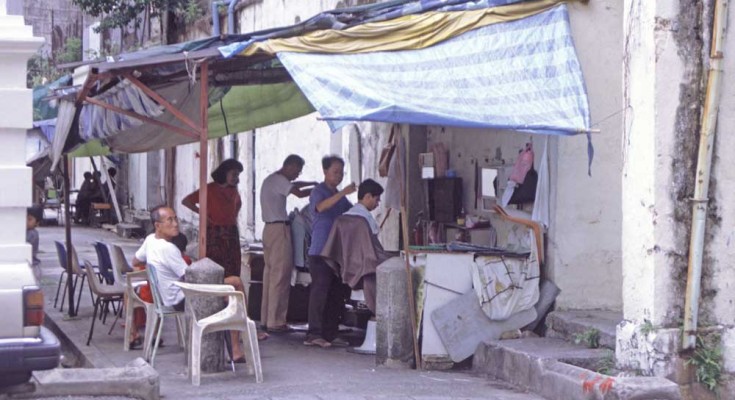 Photo from Latitudes.nu
Photo from Latitudes.nu
Now, street barbers are practically non-existent, and sadly, Tan seems to be the last one left in Singapore.
This fact does not appear to faze him though. When asked how he feels being possibly the sole remaining figure of a vanishing trade in Singapore, Tan commented in a blasé manner that he does not "feel anything".
"This is just work," he says pragmatically.
Does Tan like what he's doing though? After all, he has been barbering since the 1960s, previously under the guidance of his shifu.
"It's not about liking it or not," he says. "It's because of stomach, because of living. Anyway, I don't know how to do anything else also."
In contrast to many in the younger generations who actively job-hop and pursue careers in search of something they are passionate about, Tan seems contented to stick with what he has been doing.
Like many in the past who might have been thrust into a livelihood more out of circumstance than choice, perhaps Tan has slowly grown to enjoy his trade.
Customers from two generations
Similar to most other businesses, Tan's barber shop was also affected by the Covid-19 pandemic.
This was because "customers don't dare to come out [of their homes]", he shared.
Now that restrictions have eased up as compared to the circuit breaker period, Tan has reopened his business, albeit with safe management measures in place.
Here, the plastic chairs for customers have been purposefully spaced out according to red tape on the floor.
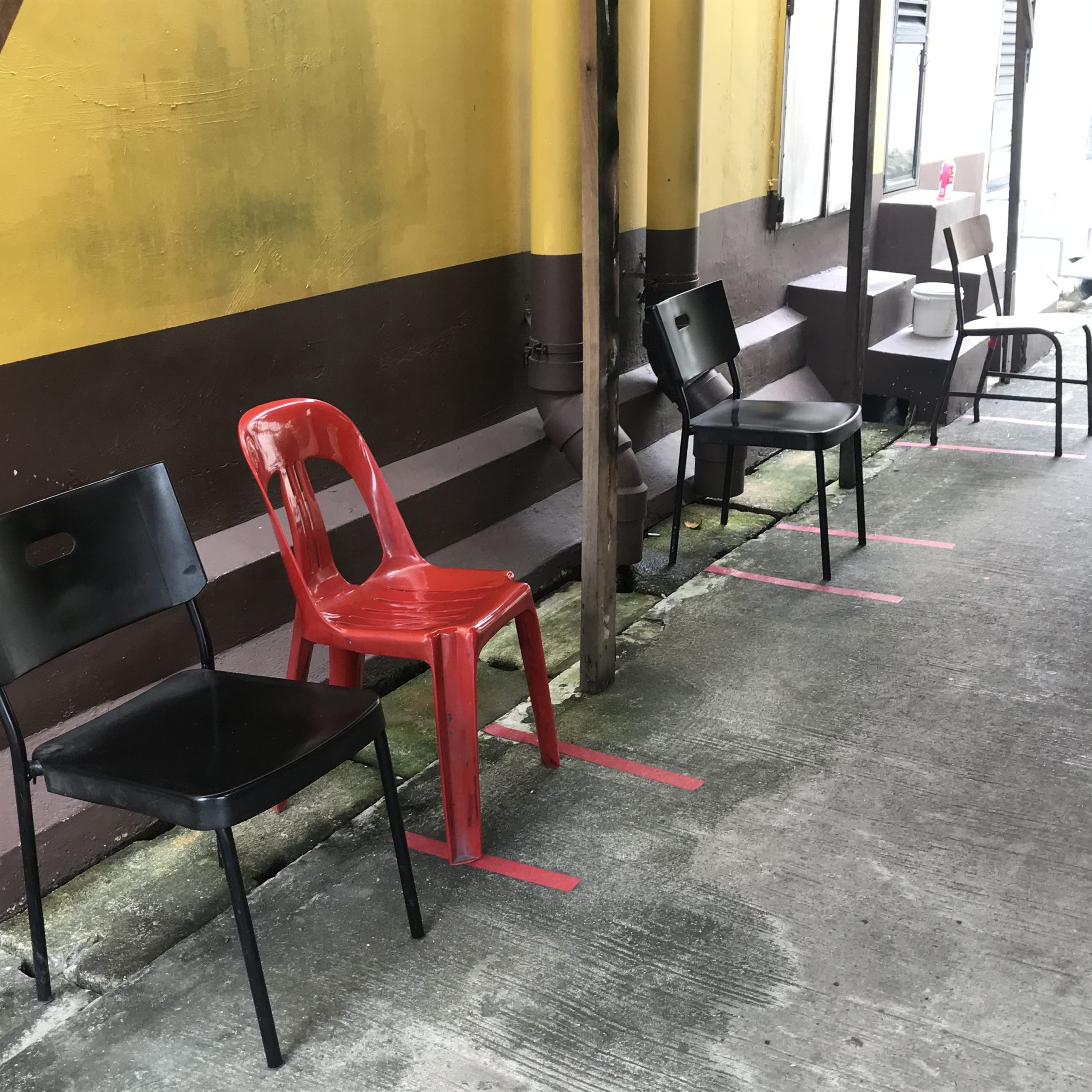 Photo by Ashley Tan
Photo by Ashley Tan
Customers have also started trickling back, and in the roughly one and a half hours I spent at his street barber shop, two elderly men arrived seeking haircuts.
The wife and daughter of one 80-year-old customer revealed that he had been patronising Tan's shop for years. The wife shared that when the shop first reopened, there would even be queues forming along the alleyway.
The elderly 80-year-old had stayed at Aliwal Street his entire life up till the 1970s, in the shophouses opposite where Tan is located.
Now, despite the family staying at Sembawang (not exactly a stone's throw away), and attempting to bring him to other hairdressers or barbers, he would insist on going back to Tan.
This patronage extends to an even earlier generation — the man's father also frequented the barber shop.
No plans to retire
The daughter of the elderly customer expressed her surprise at seeing Tan's shop, when she dropped her elderly father off for a haircut once the circuit breaker was lifted.
Like me, this was the first time she had seen a street barber in Singapore.
"It's similar to those in Malaysia, they also have something like that," she commented. However, she also noted that in Singapore, street barbers like Tan are "going to be out soon".
"If want to continue [this trade], it is provided there are people that want to carry on this kind of thing, but most ppl would rather sit in aircon place. So this kind is probably only those in my father's generation that still visit [these barbers] because that's what they do last time."
And it seems increasingly likely that the history of Singapore's street barbers will die out with Tan.
As Tan's clientele slowly shrinks over the years, coupled with the competition faced from other more modern salons equipped with new fangled hair care technology, street barbers are hard pressed to keep up in a rapidly evolving and developing Singapore.
Additionally, Tan's two sons have no intention of taking over the business.
However, the elderly barber has no plans to retire anytime soon.
"My children got tell me to retire, but I will just work as much as I can, for as long as I can," Tan brushed my question off.
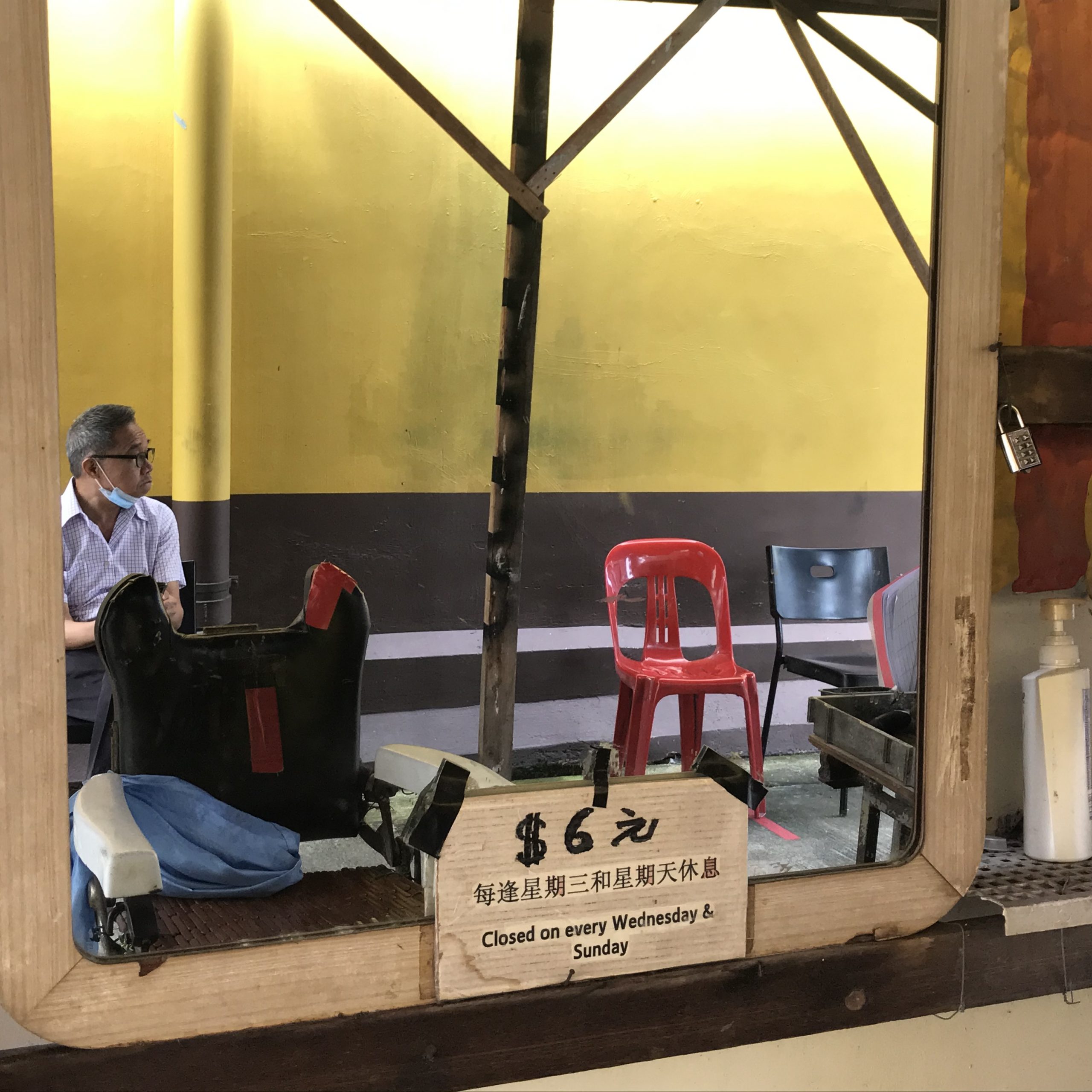 Photo by Ashley Tan
Photo by Ashley Tan
If you would like to visit Tan for an affordable, old-school haircut and shave, here's the precise location of his shop, marked with a star.

Stories of Us is a series about ordinary people in Singapore and the unique ways they’re living their lives. Be it breaking away from conventions, pursuing an atypical passion, or the struggles they are facing, these stories remind us both of our individual uniqueness and our collective humanity.
Top photo by Ashley Tan
If you like what you read, follow us on Facebook, Instagram, Twitter and Telegram to get the latest updates.
